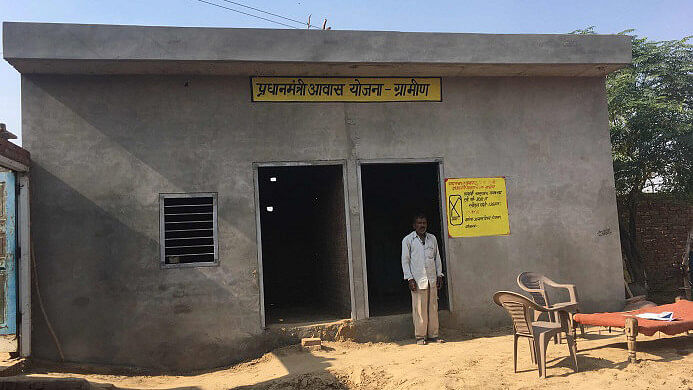New Delhi: With a new government in place, the Ministry of Rural Development has hit the ground running. In its freshly drawn 1,000-day agenda, the ministry has proposed construction of two crore houses, linking every village with all-weather roads, toilets in each home and ensuring end-to-end digitised government process for all schemes.
Following the Narendra Modi-led government’s 1,000-day target, the rural development ministry has drawn up a list of “milestones” to be achieved by June 2022. In a letter circulated to all states, the ministry has said that these milestones would be deliberated upon at the upcoming Performance Review Committee meeting, which is scheduled to be held on 6 and 7 June.
The rural development ministry receives the highest budgetary allocation after defence and oversees the implementation of key schemes such as the Mahatma Gandhi National Rural Employment Guarantee Act (MGNREGA), the Pradhan Mantri Awas Yojana – Gramin (PMAY-G), the Pradhan Mantri Gram Sadak Yojana (PMGSY) and the National Rural Livelihood Mission (NRLM).
With most of its schemes being politically and electorally significant, this ministry’s role and functioning has become even more crucial.
Also read: India’s caste problem has a silver lining: urbanisation, and inter-caste marriage
The ‘targets’
The rural development ministry plans to achieve all targets by 30 June 2022 so as to “enable celebrations” on 15 August that year — which will mark the 75th anniversary of India’s Independence.
Rural housing under PMAY-G was a priority for the Modi government’s first stint and will continue to remain so this time too. While 1.5 crore houses were built between 2014-19, the target this time is to complete two crore houses by 2022.
To achieve this target, the scheme has been divided into three parts — 70 lakh houses by June 2020, another 70 lakh by June 2021 and the remaining 60 lakh by 2022.
Under PMGSY — which is a nationwide plan to provide all-weather road connectivity to unconnected habitations — the ministry has asked all states to submit an “action plan” for building such roads to each village across the country by 2 October 2019. The government plans to ensure that each village has road connectivity by June 2022.
Sanitation has been another priority area for the Modi government. To “ensure a toilet in each house”, the rural ministry has also decided to converge the flagship Swachh Bharat Mission with MGNREGA.
For better implementation of rural schemes, the government has proposed banking services within 5 kilometers and “end-to-end digitised government process” for all projects.
The ministry also aims to increase outreach and spread of women self-help groups (SHG) and expansion of the National Social Assistance Programme (which provides pension to the elderly, including widows and persons with disabilities) in order to cover marginal and small farmers within its ambit.
Also read: India’s rural employment plan has been giving fewer & fewer jobs to the most deprived
Political significance
With a large number of schemes that fall under it, the rural development ministry is among the most crucial government units. While MGNREGA had helped the Congress electorally, the Modi government’s push towards rural housing and all-weather roads went a long way in helping the BJP return to power with an even stronger mandate.
The Modi government 2.0 is expected to give further push towards rural schemes in its new term, enhancing budgetary allocations and looking to iron out implementation glitches.




Very impressive. All these programmes require tax buoyancy, which comes from a vibrant, fast growing economy, of the sort India last was during UPA I. This should be the government’s foremost concern.
Please don’t ask embarrassing questions ;). Money will definitely come from *somewhere*.
That said, the idea is good. But toilets require water. That’s the real problem.